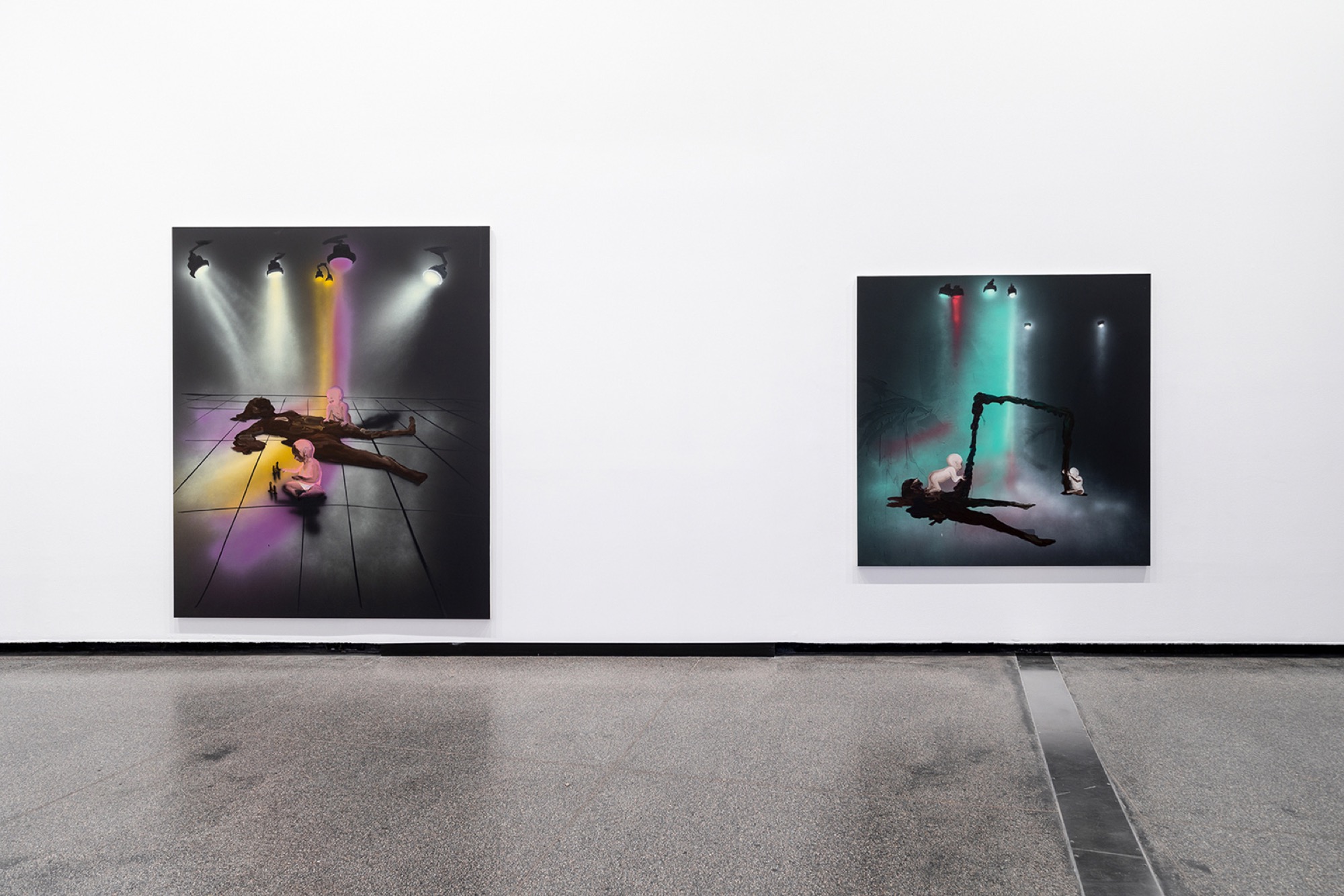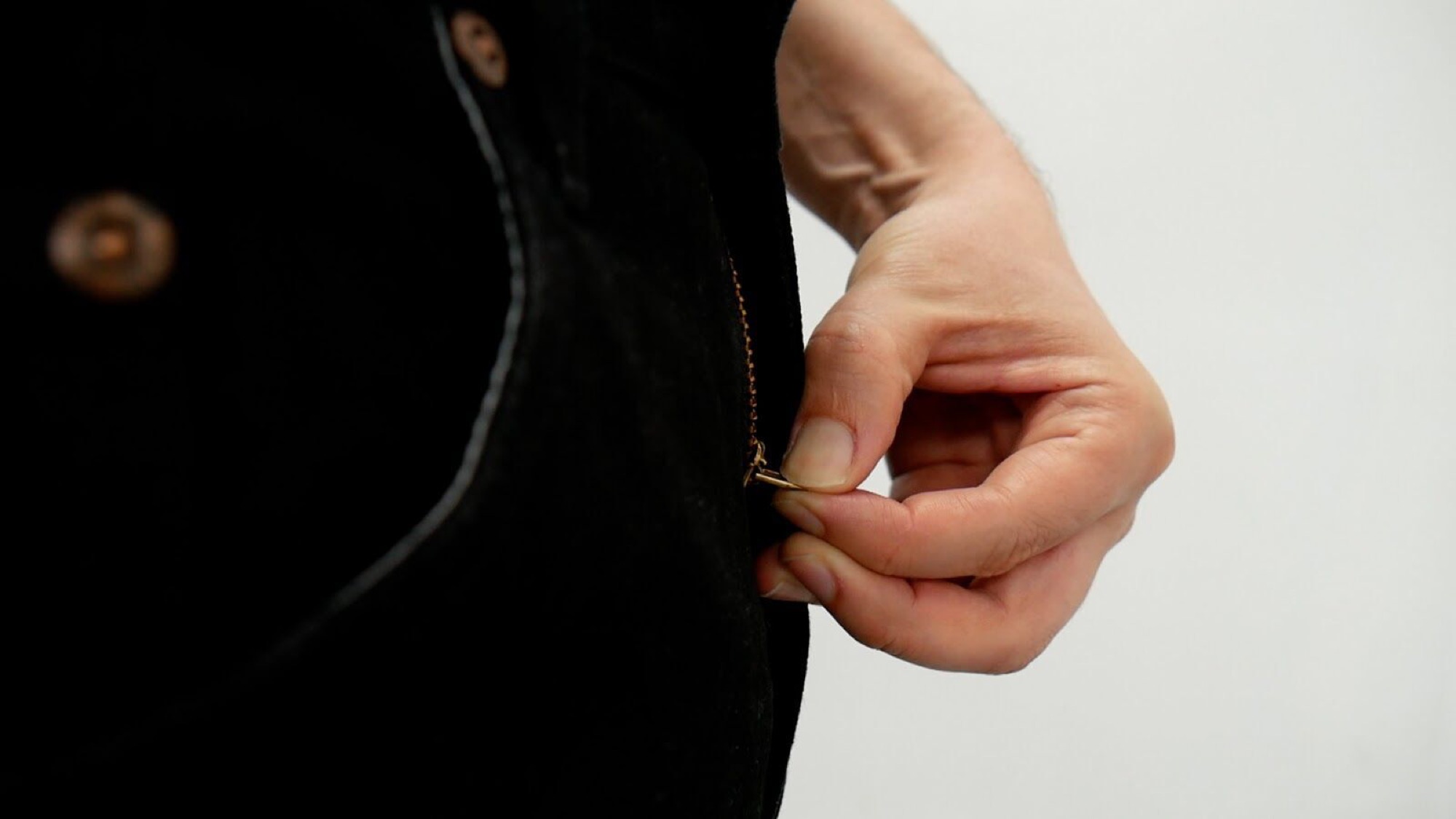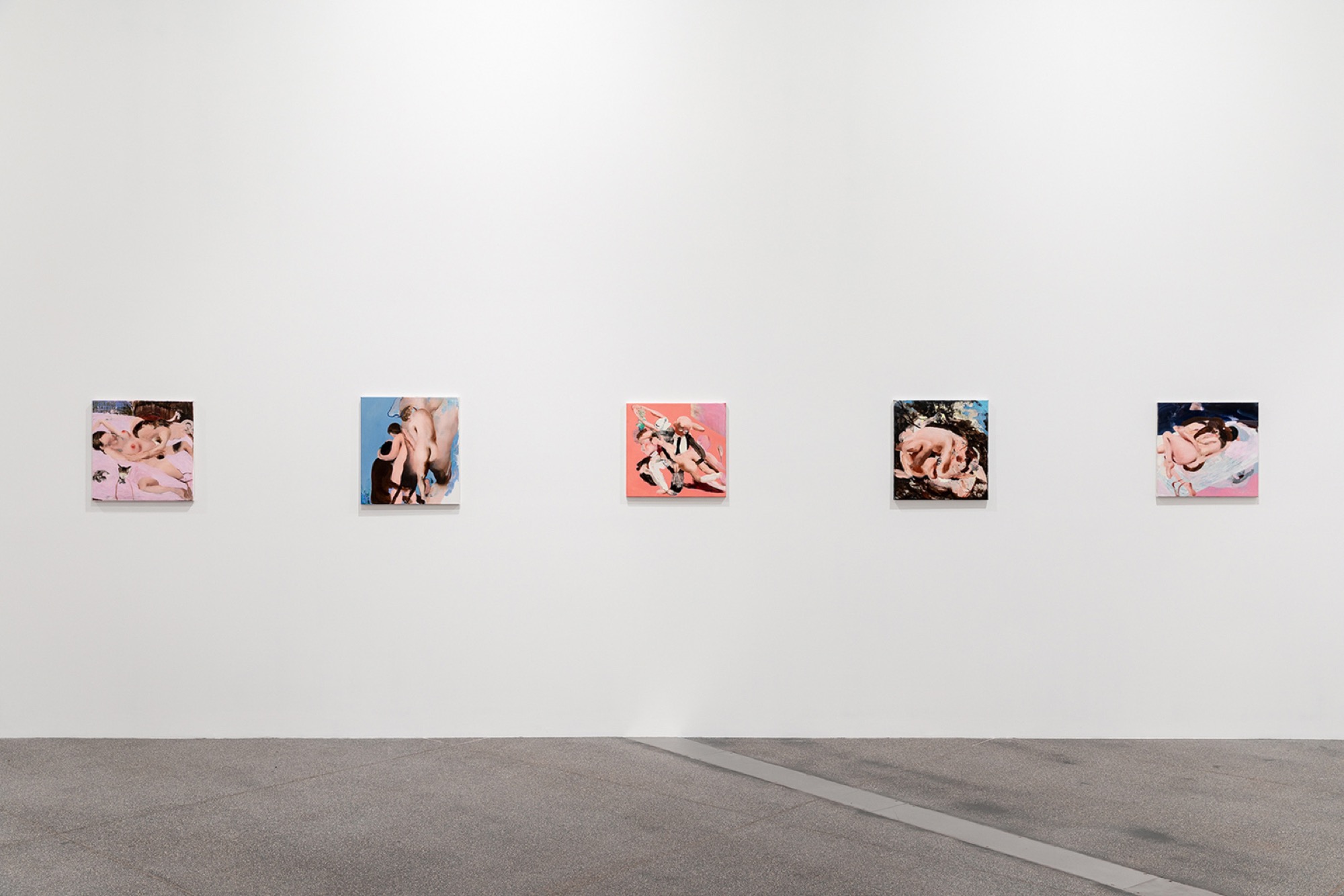On Vulnerability and Doubt
Ella Cattach
The unassuming first word in the title of On Vulnerability and Doubt is more telling than it may appear. With the apparent neutrality of an essayistic titling convention (“On X…”), it is a word that more or less disappears under the weight of the big ones that follow it. Yet “On”—as the disparate works in this exhibition curated by Max Delany suggest—institutes a gap between artist and “X”. This is an exhibition that is true to its word. The artworks it includes take distance from vulnerability and doubt, reflecting on them, rather than manifesting them.
On Vulnerability and Doubt features the work of eight artists who practise “across geographic and generational divides,” Delany writes in the catalogue, but who share “a sensibility perhaps, steeped in a sense of minority and deviation from the norm.” The show is framed without allusion to the now-ness of vulnerability in pop psychology, a referential exclusion that has not prevented the exhibition being received in these terms. Time Out’s plug for the exhibition reads, “Putting yourself out there—whether in love, work or friendship—is one of the most terrifying things a person can do, so it’s the perfect inspiration for the (…) winter exhibition.” Andrew Stephens of The Sydney Morning Herald reviews the exhibition with reference to the “hugely successful TED talks” of Susan Cain and Brené Brown, “recent champions of the power of expressing our doubts and vulnerabilities.” These champions make injunctions for us to be vulnerable and to lean into vulnerability. Their injunctions suppose vulnerability is something we can choose. They ascribe a positive value to it, so that vulnerability leads to power, and doubt—in Cartesian fashion—leads to its own eradication.
It is therefore surprising that the artworks included in this show do not feel vulnerable—they do not impress upon the viewer, as one might expect, a sense of helplessness or anxiety. Nor do they evoke shame (an affect less seductive than the titular themes, but conceptually knotted throughout). The exhibition does not make viewers hotly aware of their own vulnerability. It presents, with varying degrees of directness, cool takes on vulnerability and doubt. The on is sometimes more of a sidelong glance than a brazen stare-down. The artworks are often funny.

Befitting the way the viewer passes through the body of work on offer, and digests it, the exhibition starts with spit and ends with shit. Greeting viewers as they enter the gallery space is Melbourne artist Charlie Sofo’s Various confectionary sucked to the smallest structural point, 2019, for which spit has performed alchemy. The resulting micro-jewels are laid out on a knee-high plinth and contained in Perspex, to be peered at from bird’s-eye. At the other end of the tract are the scatological paintings of Iranian-American artist Tala Madani, Shit mother (leisure) and Shit mother (goalposts), both 2019. In them, two of those most archetypally vulnerable figures—mothers and babies—are metamorphosed: mothers become supine humanoid mounds of shit and babies are murderous shit fiends picking at their mothers as if they’re Play-Doh. Daughters too are treated in the exhibition by Melbourne artist Linda Marrinon, whose tinted plaster sculpture Gainsborough’s Daughters, 2017, masks delicacy with grotesquerie.

The vulnerable stuff of bodies is transmogrified throughout the exhibition. In between the spit and shit there are representations of menstrual blood and spilt semen in Marrinon’s painting Sheet, 1993; the grease of fingerprints in German artist Andrea Büttner’s Phone etching prints, both 2015; and uncertain digits being inserted into wounds and orifices in the four paintings borrowed from New Zealand-born Melbourne artist Brent Harris’s 2007 Borrowed plumage series.
The skin of Brisbane-based Kamilaroi artist Archie Moore’s torso is turned into a digitally printed size L polyester t-shirt in My Skin, 2019, hung next to a large-scale photograph of the artist—torso bare—standing between two people wearing his “skin” in Under my skin, 2019. In both works, which are from the series Shirtfront, the artist’s “skin” hangs off the wall. The t-shirt hangs from a mounted coat hanger and the unframed photographic print is hung low so that it drapes on the floor. Moore’s t-shirt—as replica, garment and commodity—asks provocatively, satirically, of both identity and vulnerability: can they be tried on and traded on?

These varied representations of raw corporeal vulnerability are mostly discharged of the electrical energy of abjection (with the exception perhaps of Madani’s shit mothers). An elegant example of this displacement is Sofo’s Breath, 2019, a video work that uses for “breath” the artificial clouds of what looks like the work a smoke machine. Plumes part before images of the Melbourne cityscape, the view of a creek from a bridge, an unmade bed, commission flats through a window, ACCA’s exterior… There are many witty moments in Sofo’s expansive contribution to the show, which counts Breath as one of four video works, along with three found object sculptural installations, and two sets of prints. The digital videos—Breath, Library, Undone, Low notes, all 2019—collude with one another, not least through the bleeding of sound.
Library’s vision rests, one subsection of a row at a time, on sociology and history books in the University of Melbourne’s Baillieu Library (pinpoint-able by their codes), and shows a hand selecting a book from each. The selected titles, obscured by the hand that extracts them, are near impossible to read. That seems to be the point: like the balls on display in Sofo’s Lost soccer balls (removed from circulation for the duration of the exhibition), 2019, the books borrowed are taken out of circulation—unable to be read by others. Poetic coincidences among the titles of remaining books include Paper Landscapes and Vertical Mosaic; Imperfect Balance names a book casually leaning against the right edge of one the frames. Each time a book is withdrawn from circulation, those that remain fall one by one, bridging its void. Uneven percussive notes accompany the falling of the books, providing part of the soundtrack to Sofo’s exhibited work. “Sound travels large distances”; a slide from the cycle of texts in Low notes reads, “it might as well have echoed from deep space.”

Undone shows a close crop of a black jean wearer’s crotch. The wearer’s hand slowly undoes the fly front. A single descending note accompanies the unzipping motion; it is attenuated each time the zip is pulled a tooth lower. The punch line: its low notes are audible while watching the neighbouring Low notes. While the titles Undone and Low notes are suggestive of vulnerable states, both works are supremely controlled, as in the careful incremental lowering of a zip tooth by tooth. The texts that comprise Low notes are reflective and charming, not undoing or confessional. Sydney artist and academic Cherine Fahd also demonstrates wariness of the confessional form in her Fear of series, 2011/2019. Their corresponding didactic suggests that the series “can be considered a self-portrait of sorts (…) a series of personal written disclosures that she pasted up as street posters.” Fahd eschews handwritten form: her words are “typed rather than handwritten so as not to appear diaristic.” They are anonymised so as to “tap into both the personal and universal.” “Fear of failing,” “Fear of getting old,” “Fear of meeting new people,” are relatable to the point of being almost generic. These text works are, in a way, a form of disavowed disclosure. They mitigate their vulnerability.
The headliner artist of the exhibition is Büttner, whose 2016 Beggar series lends one of its beautiful woodcut prints to the exhibition’s paratextual material. The series is composed of variations of differently yet brilliantly coloured prints depicting veiled figures with their heads bowed and palms outstretched. Büttner’s 2018 book of the same name splices her series through an investigation of the iconography of the beggar. The book Beggars includes material from courses taught by the late art historian Linda Nochlin at NYU on representations of poverty and an original piece “Poverty Remixed (sestina)” by the Canadian poet Anne Carson. Büttner compares the figure of the beggar to that of the artist, whose shame she finds analogous to the beggar’s. Berlin-based Canadian painter Ambera Wellmann also draws attention to the shameful exposure of the artist in a 2017 interview: “You might make something and like it and then as soon as someone walks into the room, oh my god it’s a bad painting. Suddenly it’s like your genitals are out.”

Most of the figures in Wellmann’s five medium-scale paintings—The subject, Pastoral, Autoscopy, Limbal, all 2019, and Mutual provender, 2018—have their genitals out. They share an intimate space with Harris’s five paintings (a more recent painting The Listener, 2018, sits alongside the four from Borrowed plumage). Wellmann’s supersexual paintings cannot help but rub off on Harris’s taut representations of Doubting Thomas, the apostle compelled by his need to “verify with a touch”—as Justin Clemens put it in an essay on the series. An effect of this proximity is that Borrowed plumage #6 (doubt), a large-scale abstract painting of a digit plunging into a lipped hole reminds one, just a touch, of Slavoj Žižek’s oft-repeated joke that perfect sex is possible: it can happen between a fleshlight and a dildo. It’s perfect because it’s invulnerable. Wellmann’s paintings are like the inverse of Harris’s; they almost fall apart under the pressure of their own muddy, bloody excess. It is perhaps no coincidence that there is one clothed figure among the entwined, amorphous bodies that populate her works. In the middle of the middle of her five paintings, there is a master in suit and tie, whose fist disappears into the rear of the nude figure bent over his knee.

The master is a sadist. In an LRB essay on tantrums, the British psychoanalyst Adam Phillips describes sadism as an attempt “to transform the trauma of vulnerability into the triumph of omnipotent control.” This is the same game the shit-smeared and smearing babies in Madani’s paintings play—even they cannot accept their radical helplessness. We might see making art on vulnerability as way of making vulnerability bearable. The unmet anticipation that works in this exhibition might ooze vulnerability begs the question: why do we want to see the vulnerable? Could that impulse itself be perverse?
One wonders what artworks of (as opposed to on) real vulnerability would look like. They might look like something we don’t want to see. In the exhibition catalogue, Miriam Kelly relays an email from Sofo on his anxiety about the curatorial premise: “is this going to produce something that no one actually wants to happen?”
Ella Cattach is a Melbourne-based writer.


